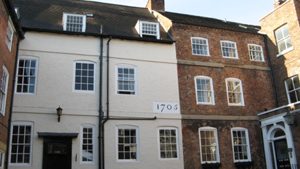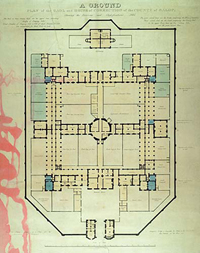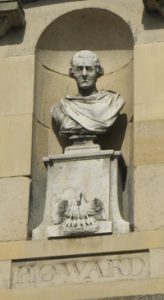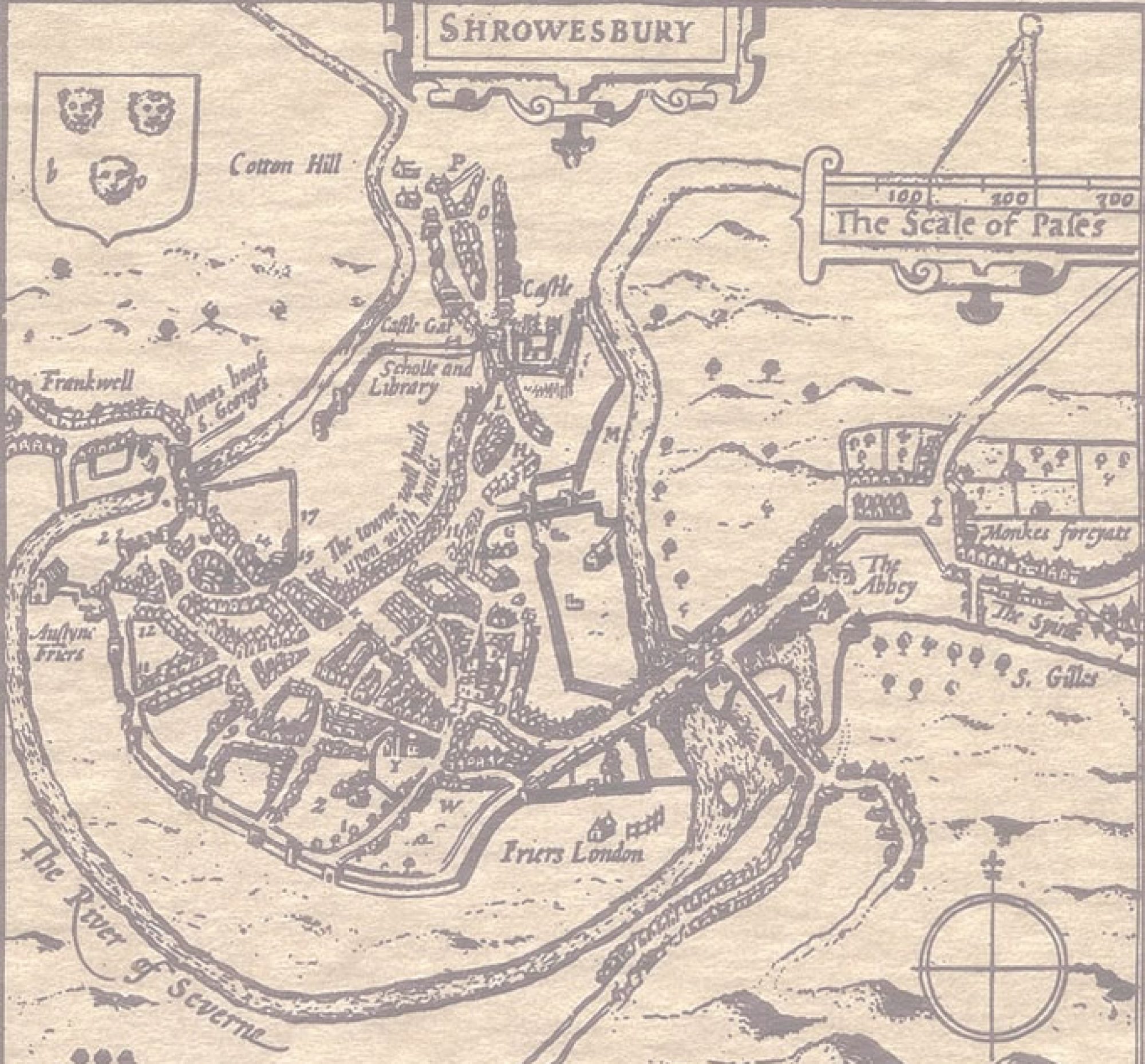
Howard Street runs up from Castle Foregate, Shrewsbury, and past the Buttermarket to join The Dana in front of the prison. Howard Street is named after the prison reformer John Howard (1726-90).

Howard, a man of independent means and deep Christian conviction, first became interested in prisons after having been captured by French privateers and imprisoned until a ransom was paid. In 1773 he became High Sheriff of Bedfordshire, and one of his duties was to inspect the local prison. He was deeply shocked by the conditions there and determined to do something about prisons in general. He travelled throughout Britain, and even into Europe, inspecting prisons, and wrote a report The State of Prisons in 1777. He visited Shrewsbury on several occasions between 1774-6. The then prison had been built in 1705, and this building still stands, much altered, in School Gardens. As was the usual custom, prisoners or their families had to pay for their food and lodging, and the gaolers were not paid, so they supplemented what they were paid by the prisoners by selling them alcohol. All the prisoners of both sexes mingled freely, resulting in immorality and drunkenness, and escapes were not uncommon. Hygiene was very poor, often resulting in typhus or ‘gaol fever’. To help alleviate some of these ills, Howard arranged for the whole prison to be whitewashed and ventilated, and sick rooms and baths to be provided.

This prison was finally condemned in 1785, and William Blackburn, a well-known prison architect, drew up plans for a new one on the present site, with John Hiram Haycock as building contractor. Thomas Telford, who had arrived in Shrewsbury in 1786, and the following year was made County Surveyor, was appointed to superintend the building. Wishing to inspect the plans for the new prison, John Howard visited Shrewsbury again in early 1788, and discussed them with Telford. Howard suggested a number of alterations and improvements, which were approved by the magistrates and enacted by Telford.
Telford was deeply moved by his meeting with Howard. He wrote to a friend, ‘how I enjoyed the conversation [manner of life] of this truly good man, and how much I would strive to possess his good opinion. I regard him as the guardian angel of the miserable. He travels into all parts of Europe with the sole object of doing good, merely for its own sake, and not for the sake of men’s praise.’

Howard did not live to see the completion of the prison in 1793 – on a visit to Turkey he contracted gaol fever and died. Two of his local admirers Thomas Knight and Rowland Hunt commissioned a bust of him by the well-known sculptor John Bacon (1740-1799), for which they paid 50 guineas. This was unveiled in August 1798, and remains above the main gate of the prison, one of the few parts to survive when most of the rest of the building was demolished and rebuilt between 1880 and 1888.
